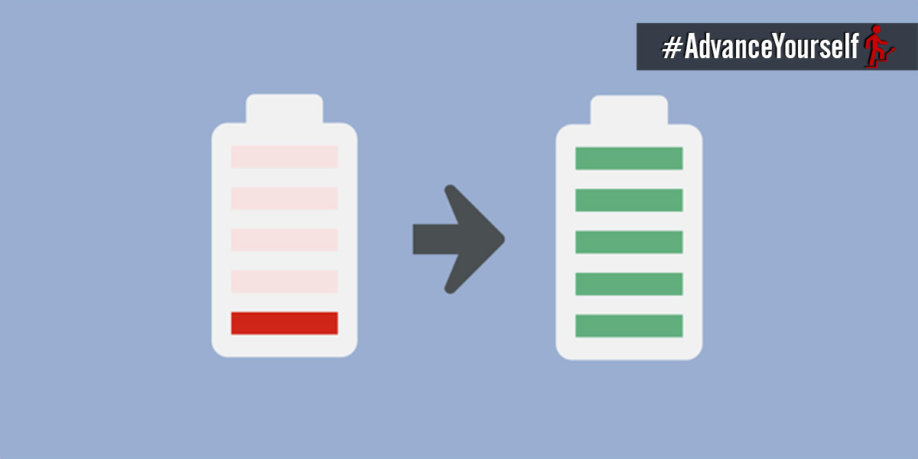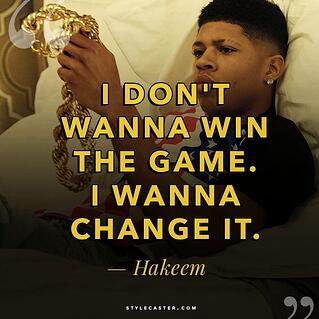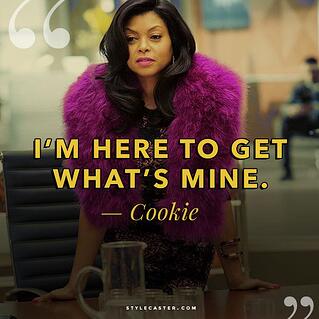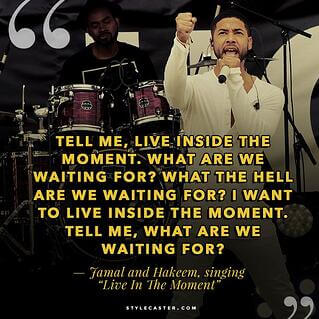Author’s Note: The following is an article I originally wrote with Jessica Webb for the site Trello.com titled “Define Your Why: How The Former Editor of TV’s Empire Is Changing The Productivity Game” republished in its entirety below.
» Click here to access the original article at Trello.com
Zack Arnold has been to the dark side of creative services and back. As television editor of hit shows like Empire and Burn Notice he routinely clocked in long days and spent little time on other areas of his life. He eventually fought back from burnout to create a wealth of resources and products to help other creative professionals to succeed both at their careers and at life.
His journey from the productivity darkroom to the daylight got us thinking: When it’s time for a major life change, how do you step up and make that happen? What kind of system do you set up to stay committed?
Not surprisingly, Zack’s got some killer ideas for staying creative, organized and in shape while working towards accomplishing life’s big goals. From depressed dark room editor to empowered creative fitness buff, Zack’s story is one worth reading.
Don’t Win The Game, Change The Game
After spending over a decade chained to a desk in a small dark room for 12 hours a day (“on a light day”), Zack Arnold was fed up. He was living the unhealthy, sedentary lifestyle that all-too-often comes with doing creative work. A film and television editor for over 15 years, Zack’s dedication to making great TV was taking its toll. So he decided to fight back.
What kind of obstacles were you facing as a creative professional working on popular shows?
“Despite the assumption that working in Hollywood must be as fancy as it looks on screen, the majority of the productions I’ve worked on have been vastly behind the times when it comes to workflows and equipment. All of the money goes in front of the cameras… very little is left over for the craftsmen working behind the scenes.
Most of the computers and operating systems we work on are immensely outdated, much of the workflow is still based on physical paperwork, and everyone still communicates primarily via email.”
What made you realize it was time to change the game?
“My first major ‘a-ha’ moment came about ten years ago after working 16-hour days for almost two months straight. I was completely burned out and depressed. At one point, the mere thought of having to take the trash out brought me to tears. I distinctly remember one late evening sitting in the dark with my head in my hands thinking, ‘I cannot live like this anymore.’”
I decided that evening I was going to stop treating myself like a Ford Pinto and start treating myself like a Ferrari.
From then on, I learned everything I could about treating myself like a high performance machine. The journey to cracking the code of healthy productivity took almost eight years, but when it did, everything clicked.
What did you learn in that moment that you think is a common struggle for most people?
“One of my greatest discoveries had nothing to do with the latest exercise program or nutritional supplement, it had to do with workflows. I realized that I spent so much of my day spinning my wheels trying to look busy instead of actually being productive.
“I was completely burned out and depressed. At one point, the mere thought of having to take the trash out brought me to tears. I decided I was going to stop treating myself like a Ford Pinto and start treating myself like a Ferrari.”
– Zack Arnold, TV Editor and productivity speaker
I think we all need to get real with ourselves about how truly productive we are in our typical workday and confront the reasons for the lack of meaningful output. For me, a big part of that was physical health, which is what launched me into a new, authentically productive lifestyle.”
If You Want It, Get Serious About It
Once you realized that the key for your creativity was to be productive instead of just busy, what did you do?
I created two programs that are designed to teach creative people working long hours in a sedentary environment how to sit less, focus more, and maximize their creative energy, despite their less-than-ideal working conditions. Around the time that I also began researching productivity hacks, and I quickly became a full-blown productivity junkie.”
How did Trello come into your productivity mix?
“Trello was first introduced to me by my friend Kanen Flowers, and it quickly became the gateway to learning everything I could about more efficient workflows. First and foremost, I use it to manage my entire end-to-end workflow when editing a television series. My goal was to make a workflow that was 100% paperless and “email-less.” The process I developed was so successful that I created an entire Lynda.com course, Trello For Video Post-Production, which teaches my entire workflow step by step.
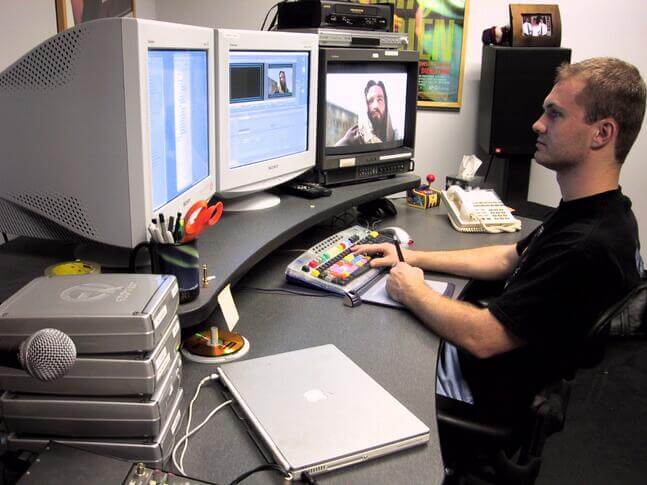
Zack editing the theatrical trailer for The Passion of the Christ in 2004.
As a creative professional, what do you see as the biggest benefit of maximizing workflows for productivity?
“Speed. Because I have freed myself from the burden of paper and email, I am able to get way more creative work done in far less time. For example, on any given single episode of a television series I get between 30 and 40 hours of raw footage (no…that’s not a typo).
Keeping track of that amount of raw footage can be overwhelming, but with Trello I can meticulously organize all of my paperwork, creative ideas, and most importantly, the notes of directors and producers. This means that any any given time I can find a specific shot, line, document, or single creative note at the click of the mouse.
Ultimately, having a Trello workflow has allowed me the ability to leave work earlier and read my kids a bedtime story almost every night. “Defining your WHY” is a big part of understanding how to prioritize work. Any time I would hit a bump in the road designing my ideal workflow, I would ask myself, “Is spending the extra time now to learn this new feature going to allow me more time later to read to my kids?” If the answer is yes, then I learn that new feature. This investment in time has paid off in spades for my work life balance.
Why Trello Is A Tool For Productivity
Obviously, your accomplishments are all you, but how did Trello help you reach your goals?
“Without Trello I never would’ve been able to write, organize, shoot, edit, and deliver my online courses. Over the past year, I have delivered almost 200 short training videos, tutorials, and exercise videos. Keeping track of them on spreadsheets and via email with my remote team would have been an absolute nightmare. Because Trello is so much fun to organize, so versatile, and so easy to teach to new team members, I was able to deliver all of my content with ease.”
What are some features in Trello that you think make your process faster and more productive than, say, the average workflow?
“Even after two full years of living, breathing, and teaching Trello, I learn new features every day. My favorite thing about Trello isn’t so much a feature as it is the idea that anyone can learn how to use Trello in under 10 minutes.
If I had to pick a few favorite features that are the greatest “needle movers” for me, three of them would be:
- The Calendar Power-Up, which turns cards into a visual calendar. I manage all of my blog and podcast content in Trello, and the calendar ensures I never miss a publishing deadline.
- Building workflow checklists that can then be copied over to each new project. Once you put your entire workflow into a repeatable Trello checklist, you release the burden of your brain having to remember numerous steps in a complicated process. You free up vast amounts of resources in your brain that allow you to be more creative!
- The ability to link cards to each other. The day I discovered each card has a unique link that can be copied into checklists in other cards was the day I became inspired to transition my entire process over to Trello.”

Those are some of our favorites too. What advice do you have for someone just getting started at being more productive using Trello?
“The best advice I give to new Trello users is to simply imagine Trello is nothing more than index cards (tasks) that you attach to a whiteboard (project). Now, turn those individual index cards over and on the back you can tape pertinent documents, photos, and leave notes for your team members about how the task is progressing.
Any time your team members respond, you’ll be notified. Write a date on the back of the card and the card pops up on your calendar. Now, take your whiteboard, put it on the web, and share it with anyone on the planet with an internet connection. That’s the power of Trello.”
Thanks for all your productivity advice, Zack!
It’s Time To Build Your Empire
If Zack Arnold has anything to say about it, the creative process doesn’t have to be an overwhelming one.
In fact, it’s just waiting for you to take control and optimize it to fit within your ideal work life balance.
Go against the norm, find your most productive self, and build your creative empire. Cookie wouldn’t expect anything less.
Zack’s Course List:

